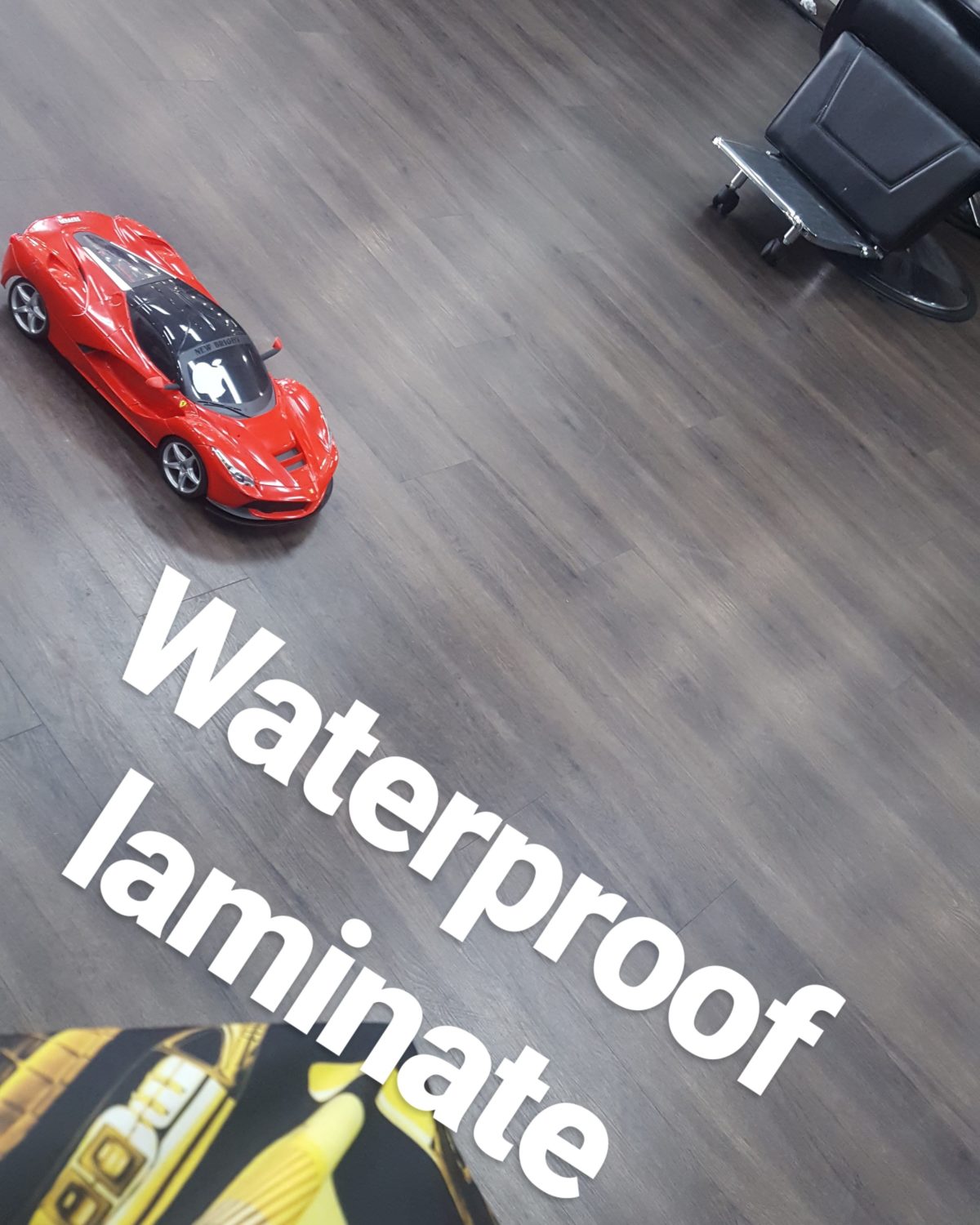Category: Uncategorized
Here are six benefits of sanding your hardwood floors:

Beauty: Sanding can make even the oldest and grittiest floors look new again. And if your floors look better, the entire space looks better overall.
- Value: Get your floors re-sanded and you’ll instantly increase your home’s market value. Any real estate broker will say that prospective homebuyers love to see homes with beautifully-sanded hardwood floors. They’ll be a big advantage when your property hits the market.
- Safety: Sanding reduces the likelihood that floors will crack and splinters will develop. Meaning that children, pets, and family members can walk across the floor in socks or bare feet without risking injury.
- Strength: Sanding evens out the surface of the floor so it’s level. It also closes up any spaces between planks, tightens loose nails, and removes wood splits. This makes the entire floor more resistant to traffic and furniture weight.
- Cleanliness: Finished floors collect little dust. A quick sweep and a wet mop every once in a while is all that’s needed to keep your floor free from debris and looking its best.
- Pest Control: A well-sanded floor is like hanging a “no vacancy” sign for pests. Sanding eliminates small crevices and holes in the floor where termites and other insects like to burrow and breed.
Some homeowners choose to install a wall-to-wall carpet rather than deal with what they think is the hassle of maintaining hardwood floors. But when it comes to carpets, you’re vacuuming weekly, worrying about spills and stains, paying for professional carpet cleaning, and ultimately covering what is one of the most gorgeous features of your home.
Ready to rip up that carpet and reveal those hardwood floors? Great! The next thing to consider is whether you should sand the floors yourself or hire a professional. Wood floor sanding is a multi-step process that requires the right equipment and knowledge. If you’re a competent do-it-yourselfer who loves a challenge, then go for it. Like most things, it may be less expensive if you do it yourself. Plus, the feeling of accomplishment when you’re done can’t be beat.
But if you’re not sure of where to start or aren’t really a DIY type of person, then save yourself a load of headaches and hire a professional floor sander. There are probably several licensed professionals in your area who can do the job quickly, cleanly, and at a fair price.
If you are fortunate enough to have hardwood flooring in your home, then it’s critical that you have the floors sanded at least once every five to 10 years. Sanding will keep your floors beautiful, clean, and shiny for years to come.
Free estimate in Miami
call me. I’m here to help 305-776-3584
Laminate flooring. Environment & Ecology
Laminate – the floor with a good ecological profile
Laminate flooring consist of wood mostly. Wood is one of our planet’s sustainable and renewable raw materials, making laminate flooring a product, which is light on resources and even recyclable. And that’s not all. Laminate flooring has a firm, sealed surface which ensures that dust and dirt simply cannot penetrate. That is why they are completely hygienic, easy-care and particularly good for allergy sufferers.
Ecologically produced
Laminate is ecologically produced without any addition of pesticides, organic chlorine compounds or hazardous heavy metals. Thanks to advanced production techniques, laminate flooring has all the positive environmental impact of wood products. But laminate offers more, because thinning material from forests and wood waste from the sawmill industry can be used to manufacture the wood fibreboard, which lessens the environmental impact even further.
The sustainable origin of the raw wood materials used is verified by recognized seals of approval, which also guarantee that – for the protection of human health and of the environment – all product components comply with the strict European Union Chemicals Regulation (REACH).
Protecting the future – respecting nature.
Laminate floors are mostly made of wood fibres and also wood pulp, in other words paper. As wood is a sustainable and renewable resource, laminate flooring is by all means an ecologically low-impact product.
Monitored production
Laminate flooring is manufactured in modern production facilities that are subject to emissions and environmental standards and in many cases have their own energy and heating cycles. As a result, laminate flooring has all the positive environmental impact of wood materials.
Environmental approach
The wood used to make laminate floors comes mainly from domestic and sustainably managed forests. This means there is no environmental damage caused by importing timber from all over the world. The production process uses not only logs but also wood waste from the sawmill industry, so to some extent laminate floors are already a recycled product.
What about formaldehyde?
Formaldehyde is found naturally in wood and is also found in melamine resin, so laminate floors as any other product made of solid wood do contain formaldehyde. But there is no risk to health, because the formaldehyde in the melamine resin is permanently locked into the resin structure during hardening so it cannot be released into the air.
Same values as measured from wood in natural state
Numerous documented measurements of laminate flooring have yielded emission values that correspond to the formaldehyde emissions limit for wood in its natural state, which are far below the legally defined limits. In other words, laminate floors do not pollute the air inside a building with odorous or harmful substances any more than ordinary wood.
EPDs attest excellent life cycle assessment
One of the impressive features of laminate flooring is its excellent life cycle assessment with extremely positive values for primary energy consumption and global warming potential. It also excels when it comes to indoor air quality assessment. Proof of this can be seen in evidence-based EPDs (Environmental Product Declarations). EPDs provide a strong argument in favour of laminate floors for anyone looking to choose a new floor with environmental impact and sustainability in mind, whether for private or public/commercial use.
Already in 2009, the EPLF was one of the first groups in the flooring industry to prompt the development of special Environmental Product Declarations (EPD) and therefore paved the way towards increased transparency and product safety. And also Architects and designers already value tested environmental quality. Interior design products which have a positive environmental impact and can demonstrate this in specific EPD are now increasingly being used in the commercial construction .
Free estimate in Miami
call me. I’m here to help 305-776-3584
Asthma triggers: Are hard flooring surfaces better than carpet?
My daughter has asthma. Should we replace the carpeting in our home with vinyl or wood flooring
My daughter has asthma. Should we replace the carpeting in our home with vinyl or wood flooring
Reducing exposure to asthma triggers is one of the most important steps you can take to prevent asthma flare-ups.
Carpeting can be a reservoir for allergy-causing substances (allergens) that trigger asthma. Carpeting in the bedroom can be especially problematic because it exposes you to carpet dust throughout the night. Hard-surface flooring such as vinyl, tile or wood is much easier to keep free of dust mites, pollen, pet dander and other allergens.Steam cleaning carpet on a regular basis can help reduce the presence of dust mites and other allergens in your home. If that isn’t enough, replacing carpeting with hard flooring may be a good idea.
If you do put in hard flooring, keep in mind that all synthetic flooring initially releases gasses known as volatile organic compounds (VOCs) that can worsen asthma. In most cases, products stop releasing VOCs after several days. However, some products release more VOCs than others do. You may want to look into low-VOC flooring if this is a concern.
It might be worthwhile having your daughter see an allergist for allergy skin testing. There may be individualized steps you can take to reduce allergen exposure once you know exactly what your daughter is allergic to.
The Benefits of Waterproof Flooring

In the last few years, many major manufacturers have come out with waterproof flooring, which has addressed many concerns homeowners have had with laminate, real wood, or other glue down products. Prior to this, when a homeowner wanted a durable, scratch resistant, and low maintenance floor, she would turn to laminate. While laminate has these attributes, it is certainly not waterproof. Laminate is essentially a wood or tile “print” put on an HDF core or what I like to call glorified cardboard. If water or any other liquid sits on laminate for an extended period of time, the core board will expand and thus ruin that plank. If the liquid is spread over a larger area the homeowner will have several planks that are ruined.
Enter vinyl plank flooring. Vinyl has come in sheet or roll forms for years. The main problem with this archaic form of vinyl is that it is very easy to scratch and tear. Once she has a tear in a sheet of vinyl, the entire sheet is “damaged” and can only be repaired by replacing it in its entirety. Therefore manufacturers have condensed the vinyl and cut it into planks and tiles. These new planks and tiles are four to five times harder than their sheet good counterparts. So not only are they very difficult to damage, but if they are damaged by knife falling in just the right way or a high heal dragging across them, the home owner can simply replace one plank or one tile.
In addition, vinyl is completely impervious to water and other liquids. However, when these products first came out, they required adhesive to install them. While very durable and scratch resistant, if water or other liquids got between the vinyl tile or plank and subfloor, the moisture would cause the adhesive to break bond with the materials and thus most times both the flooring and subfloor were ruined. Because vinyl tiles are generally installed in kitchens and bathrooms where there are ice makers, dishwashers, toilets, and sinks all hooked up to water lines, this was definitely a concern. To address this, manufacturers have added a click-together system to these products very similar to that of laminate. Instead of the sides and ends of the planks or tiles simply butting to each other and having to be held in place with adhesive, the new locking mechanism has made it possible to install the products without adhesive. So, now we have impervious vinyl that does not require adhesive- thus WATERPROOF FLOORING. If liquids are spilled on the surface of the vinyl, the planks or tiles will not expand, discolor, or ruin. If liquids get between the “click together vinyl” and subfloor, the homeowner can simply unclick the floor, dry or replace the subfloor, and click the vinyl floor back together.
We at Jack’s Tile and Carpet carry waterproof vinyl plank and tile products from many manufacturers including Shaw, Mohawk, and US Floors. We have over a hundred styles and colors available which will be sure to meet your style and performance needs. Please visit our website or give us a call to have a complimentary in home consultation in which we can bring products to you, measure, and discuss your style and performance needs in the comfort of your own home.



